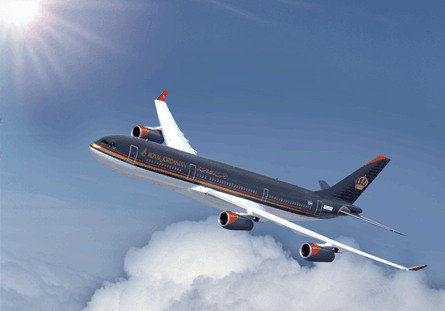New Royal Jordanian chief executive Hussein Dabbas aims to continue his predecessor's plan to make the recently privatised flag-carrier the "airline of choice" between the Levant (eastern Mediterranean) and the west by focusing on multi-frequency regional jet services feeding long-haul flights, mostly to Europe and North America, from Amman.
The oneworld airline has used its five Embraer 195s and two 175s to increase services to cities such as Beruit, Cairo and Aleppo to several a day. It has also all but abandoned efforts to compete with the big names on routes to Asia, a tactic that forced the airline to discount and lose money over a long period, says Dabbas, a 30-year Royal Jordanian veteran who took over from Samer Majali in August, after Majali had moved to run Gulf Air.
"We were pioneers of taking people through Amman to the Far East, but were selling to the cheapest customers and it wasn't profitable," he says. "New airlines were mushrooming in the Gulf with a lot of money and investing in new equipment. We don't have that privilege."
 |
|---|
© Royal Jordanian |
Instead, Royal Jordanian - a rare Arab airline that serves Israel as well as its neighbours - is targeting the Levant's 120 million or so population and its diaspora in Europe, Canada and the USA, with much of its Asian market now served through codeshares.
"Rather than trying to take the passenger from Amsterdam through Amman to Bangkok, we are focusing on Amsterdam to Amman to Beruit," says Dabbas. "Jordan's good relationships with all the surrounding countries is an advantage for us. It means we can take, for example, the guy who wants to go from Aleppo [in Syria] to Montreal more comfortably than if he had to make two long-haul flights through a European hub."
The previously government-owned airline, which was floated through an initial public offering in December 2007, has also had an image makeover, says Dabbas. "We have worked aggressively on improving our in-flight product. We had an advertising campaign based on the fact that we are changing. There were people before who wouldn't touch us with a ten-foot pole."
Dabbas says Royal Jordanian - which joined oneworld in April 2007 - has withstood the effects of the downturn relatively well, with year-to-date passenger numbers 3% lower and revenues down 18%.
Royal Jordanian had planned to start replacing its largely Airbus A340 and A310 long-haul fleet with 12 Boeing 787s from next year, but delays to the programme have forced it to look at refurbishing its A340s and even replacing the Dreamliners completely with A330s or Boeing 767s. "We are still committed to the 787, but this has screwed up our plans big time," says Dabbas.
Source: Flight International
















